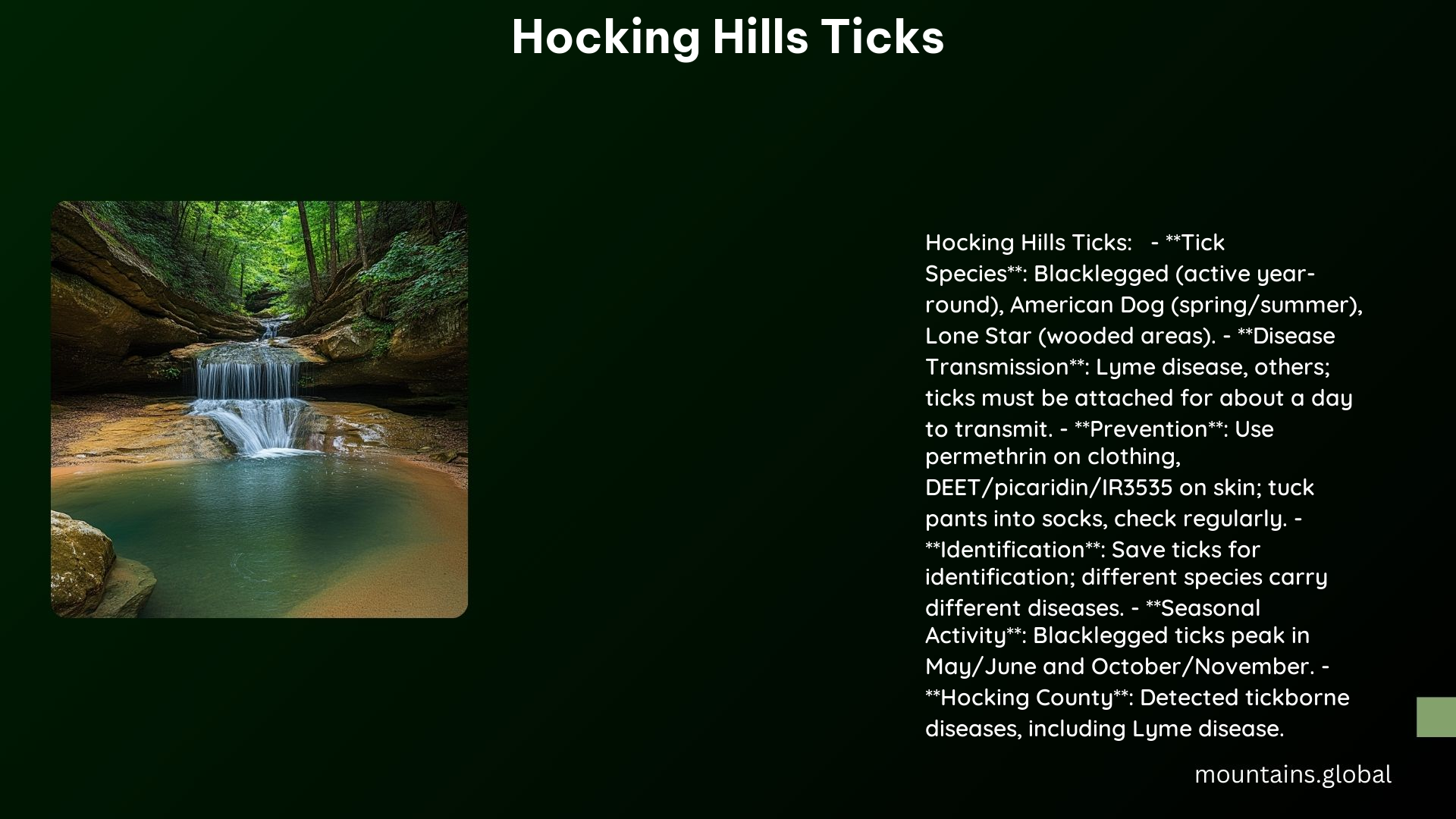Hocking Hills, Ohio, is a popular destination for outdoor enthusiasts, but it’s also home to various tick species that can pose a threat to both humans and animals. In this blog post, we’ll explore the most common ticks found in Hocking Hills, the diseases they can transmit, and the best ways to prevent tick bites and identify them.
Most Common Ticks Found in Hocking Hills, Ohio

The three most prevalent tick species in Hocking Hills are:
- Blacklegged Ticks (Deer Ticks): These ticks are active year-round, even in winter, and are found mainly in wooded areas. They are known to transmit Lyme disease.
- American Dog Ticks: These ticks are more active in the spring and summer and are found in grassy areas and road edges.
- Lone Star Ticks: These ticks live in wooded areas, particularly in second-growth forests with thick underbrush, and are known to transmit diseases like Southern tick-associated rash illness (STARI).
Preventing Tick Bites in Hocking Hills

To reduce the risk of tick bites while enjoying the outdoors in Hocking Hills, consider the following prevention methods:
- Use Repellents: Apply repellents containing permethrin to clothing, shoes, and boots. For exposed skin, use repellents with 20% or more DEET, picaridin, or IR3535.
- Wear Protective Clothing: Tuck pants into socks and boots, and tuck shirts into pants to prevent tick access to your skin.
- Regularly Check for Ticks: Thoroughly check yourself, family members, and pets for ticks after being outdoors, and remove any ticks immediately.
- Use Anti-Tick Products on Pets: Consult your veterinarian about Lyme vaccines and other tick prevention products for your pets.
- Create a Tick-Safe Zone in Your Yard: Keep your yard clean and free of debris to reduce tick habitats.
Diseases Transmitted by Ticks in Hocking Hills
The ticks found in Hocking Hills can transmit several diseases, including:
- Lyme Disease: Transmitted by blacklegged ticks, Lyme disease can cause fever, headache, and a characteristic bull’s-eye rash.
- Southern Tick-Associated Rash Illness (STARI): Transmitted by lone star ticks, STARI causes a rash similar to Lyme disease.
- Other Diseases: Ticks in Hocking Hills can also transmit Rocky Mountain spotted fever, ehrlichiosis, and anaplasmosis.
Tick Removal and Identification
If you find a tick attached to your skin, it’s important to remove it properly and monitor your health for any signs of illness:
- Remove Ticks Carefully: Use fine-tipped tweezers to grasp the tick as close to the skin as possible and pull it straight out.
- Monitor Your Health: Watch for symptoms like fever, rash, or flu-like illness in the weeks following a tick bite, and seek medical attention if necessary.
- Save the Tick for Identification: If you can, save the tick in a sealed container for identification by a healthcare provider or local health department.
By understanding the ticks found in Hocking Hills, taking preventive measures, and knowing how to properly remove and identify ticks, you can enjoy the beautiful outdoors while minimizing the risk of tick-borne diseases.
Additional Resources
- Hocking County Health Department: For information on tick-borne diseases and prevention, call 740-385-3030 ext. 2.
- Ohio Department of Health: For information on tick-borne diseases and prevention in Ohio, visit their website.
- Ohio Department of Natural Resources: For information on ticks in Ohio and how to protect yourself, visit their website.
Reference:
– Hocking Hills State Park
– Ohio Department of Health – Tick-Borne Diseases
– Centers for Disease Control and Prevention – Tick-Borne Diseases
